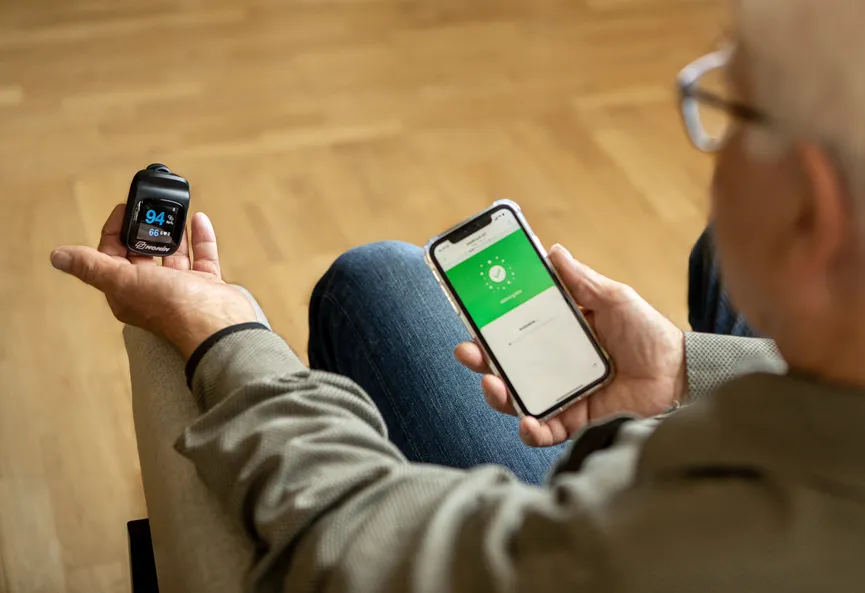COPD
COPD (chronic obstructive pulmonary disease) is in most cases caused by tobacco smoking, but passive smoking, dust and gases in certain environments for a long time can also cause COPD in people who have never smoked. In COPD, the lungs undergo pathological changes in both the alveoli and the smaller airways. Over time, the walls of the alveoli are destroyed and larger cavities form, known as emphysema. There, the gas exchange between air and blood stops working. Emphysema makes the lungs work worse and you become short of breath more easily.
Symptoms
With COPD, it is common to become short of breath on exertion, feel tired and have less energy, have to cough up mucus more and more often and often get infections in the respiratory tract. Many also experience weight loss, sleep problems, pain and depression.
Reason
COPD also causes the mucous membrane in the airways to become inflamed, it then becomes swollen and easily irritated. The cells that produce mucus become more numerous and produce more. In the airways there are also fine cilia whose task is to transport the mucus upwards towards the trachea. The cilia are largely seriously damaged by tobacco smoke, which means that transport is impaired and that you have to cough much more to get the mucus up
Treatment
The damage that has already occurred to the lungs cannot be repaired. Therefore, the treatment aims to prevent further deterioration in the lungs and improve other functions in the body.
The most important thing is to stop smoking. In addition to that, it is important with physical activities and eating an energy-rich diet. It is good to find ways to facilitate your breathing and to avoid infections. Knowledge of your illness is always good so you can be more active in your treatment.
Some tips on what you can do to feel better in everyday life:
- Avoid smoking.
- Facilitate breathing using breathing techniques.
- You may need drug treatment. Talk to your doctor.
- Vaccinate yourself annually against influenza.
- Vaccinate yourself against pneumococcus.
- Contact a dietician if you lose weight involuntarily.
Source: 1177
Remote patient monitoring for COPD
Remote patient monitoring for COPD is mainly based on a validated and score-based questionnaire called CAT, where you answer questions about your symptoms in your app. The scores on the questions are added up to give a total score. The total score indicates whether you are affected by your COPD or not. The result of the form is registered in the app and automatically transferred to your healthcare provider, who in the event of serious or worsening symptoms receives a notice of this and can contact you for possible measures. In the app, you can see the results of previously answered questionnaires.
To detect a deterioration in time, patients with COPD can also be monitored for oxygen saturation and temperature. Then you get a Bluetooth-connected pulse oximeter that measures oxygen saturation and pulse and records the values automatically in the app. By monitoring oxygen saturation and temperature, the caregiver gets an indication if you are about to have an acute deterioration in your breathing, a so-called COPD exacerbation. The most common cause is respiratory infection, which requires increased treatment.

